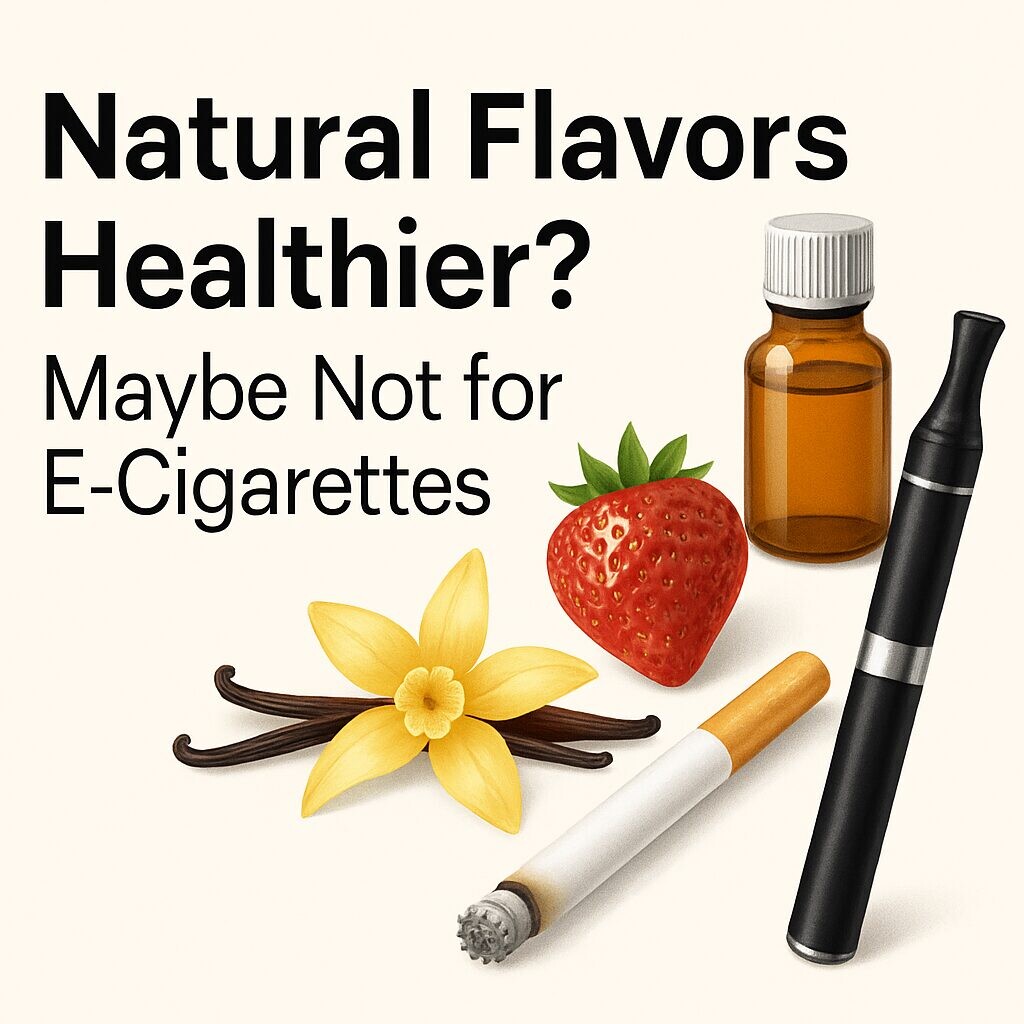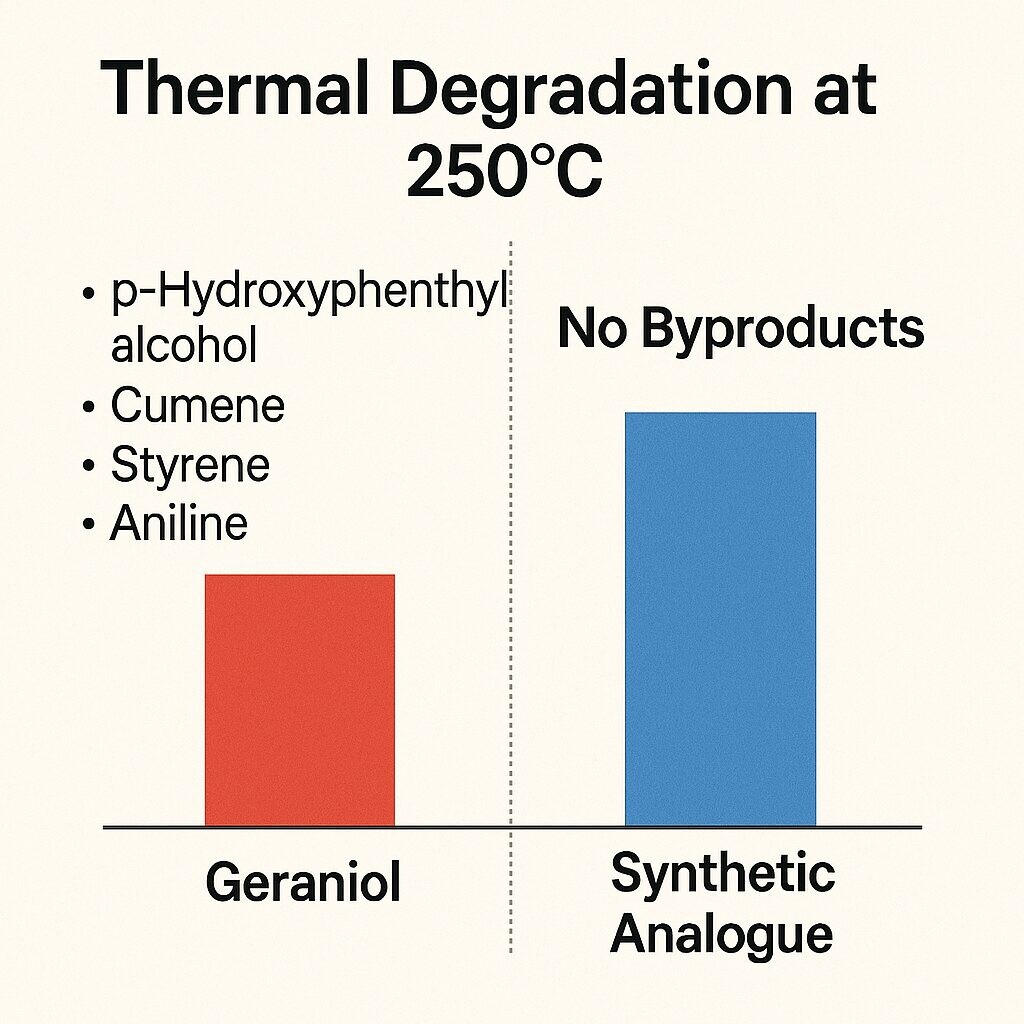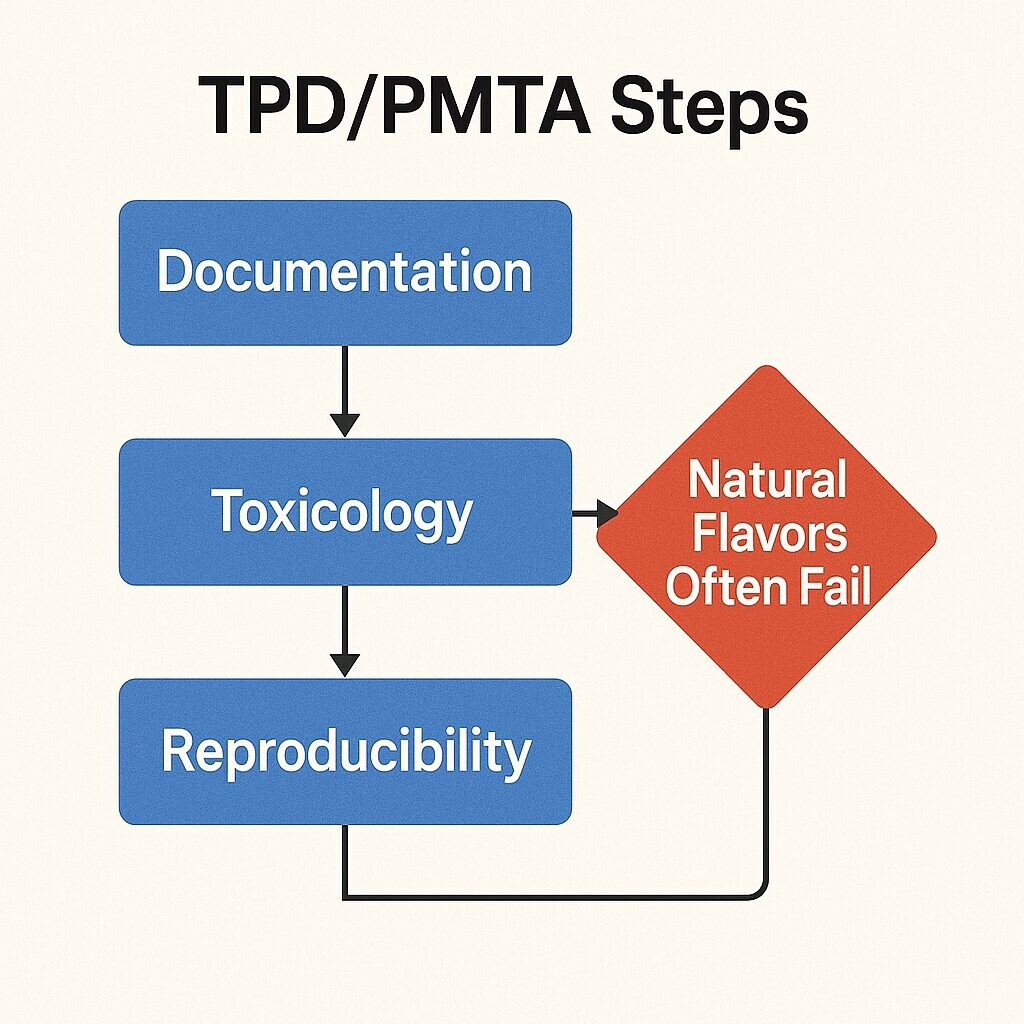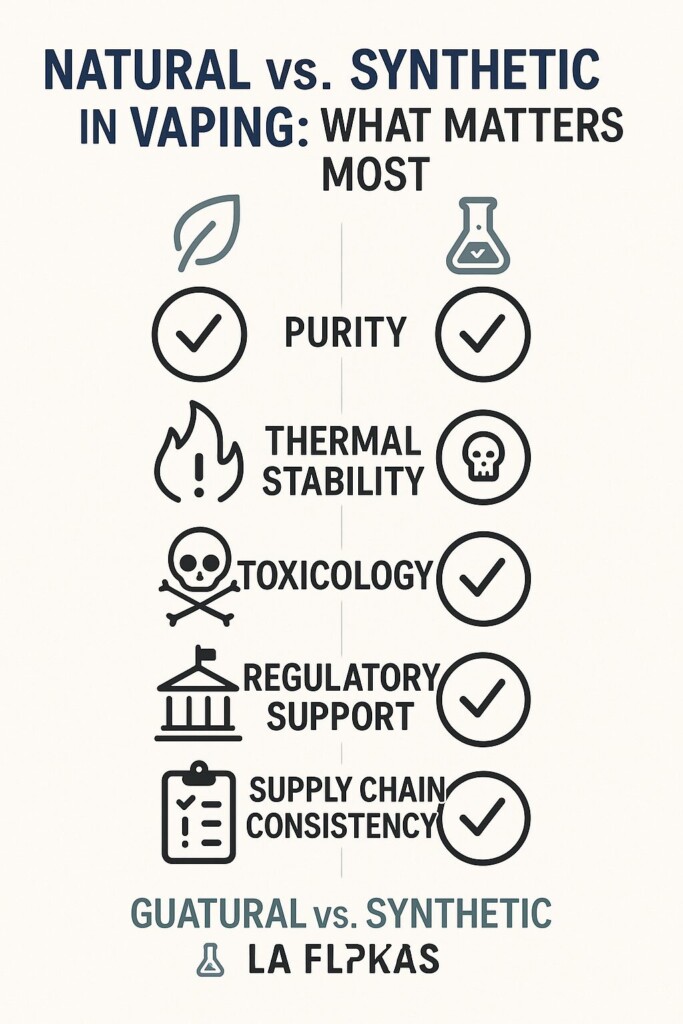
In today’s health-conscious marketplace, terms like “natural,” “organic,” and “clean” dominate consumer preferences. This trend has carried over into the flavoring industry, where natural extracts are often perceived as healthier alternatives. But when it comes to the highly technical and heat-intensive environment of e-cigarette (e-liquid) vaporization, the assumption that “natural equals healthier” may not hold true.
This article challenges common assumptions and compares natural and synthetic flavors through the lens of science, safety, and regulatory scrutiny. By the end, purchasing managers, formulators, and brand owners will better understand why suitability, not origin, should guide flavor selection in the vaping industry.
Natural flavors are aromatic compounds derived from physical processes like extraction, distillation, or fermentation. These can come from botanicals such as vanilla beans, citrus peels, spices, or herbs. For example, vanillin can be extracted from vanilla pods, while limonene is often obtained from citrus zest.
Pros:
Marketable as “clean label” ingredients.
Often perceived as more “authentic” or premium.
Rich, complex aromatic profiles.
Cons:
Inconsistent quality across batches due to seasonal and geographic variables.
Susceptibility to thermal breakdown.
Higher production costs and lower scalability.
Contains many minor constituents that may not be fully characterized or tested for inhalation toxicity.
Synthetic flavors are created through chemical synthesis or biosynthesis, either replicating naturally occurring molecules or designing novel ones to achieve targeted aroma and taste effects.
Pros:
Reproducible and scalable.
Chemically pure and analytically verified.
Designed for specific performance, including heat resistance and solubility.
Cons:
Potential consumer resistance due to “artificial” labeling.
May lack the nuanced complexity of some natural extracts.
E-liquids are not beverages or baked goods—they are aerosolized and inhaled, sometimes at temperatures that rival combustion. Therefore, the behavior of flavor compounds in this context is unique and critical.
Vape devices commonly operate at temperatures between 200°C to 300°C, with some sub-ohm devices exceeding 350°C under prolonged firing. At these temperatures, many natural compounds degrade into harmful or even carcinogenic byproducts.
Examples:
Geraniol can degrade into acrolein and formaldehyde.
Eugenol, a clove extract, may release methyleugenol, a suspected carcinogen, when overheated.
E-liquids consist mainly of propylene glycol (PG) and vegetable glycerin (VG), both of which have defined polarities. Flavors must not only dissolve but also remain homogenous and chemically inert over time.
Natural extracts often:
Separate into layers or precipitate.
Interact with PG/VG to produce off-notes.
Oxidize or degrade upon storage.
Synthetics, on the other hand, can be specifically selected or modified to match the polarity of the e-liquid base and remain stable for extended shelf lives.
While a natural extract may contain the target compound, it also includes a spectrum of minor constituents, many of which lack inhalation safety data.
These minor compounds may:
Break down into reactive aldehydes or phenols.
Participate in complex reactions with nicotine or acids in e-liquids.
Cause batch-to-batch variability in both flavor and toxicology profiles.
Example: Rose essential oil, prized in perfumery, produced styrene and aromatic amines when vaped—both flagged as high-concern chemicals by global health authorities.
Labeling a flavor as “natural” does not exempt it from the strict regulatory frameworks governing inhalable products.
PMTA (Premarket Tobacco Product Application) requires comprehensive toxicological data.
Every flavor compound must be analyzed for thermal stability and degradation byproducts.
Requires notification with full ingredient breakdown.
Scientific dossier supporting safe use under typical vaporization conditions.
Natural flavors often fail due to insufficient documentation and variable composition.
Unlike natural compounds, synthetic flavors can be structurally engineered to eliminate reactive sites or degrade into inert products.
For example:
Synthetic vanillin analogues can maintain aroma while minimizing aldehyde formation.
Tailored esters can deliver fruity notes without forming acetic acid under heat.
These benefits are not just theoretical. Many reputable vaping ingredient manufacturers design synthetic flavorants to withstand aerosolization, providing a better user experience and regulatory compliance.
High-quality synthetic flavors often come with:
GC-MS profiling under both room and vaporized conditions.
Stability tests in PG/VG over 6–12 months.
Acute inhalation studies conducted in accordance with OECD protocols.
REACH registration (in Europe) or FEMA GRAS status (in the U.S.) with inhalation disclaimers or exemptions.
All of this data empowers e-liquid manufacturers and procurement teams to make informed, defensible choices.
As the e-cigarette industry matures, many leading brands are abandoning the “natural” positioning in favor of data-backed performance and regulatory alignment.
Several factors are accelerating this trend:
Pressure from regulators to eliminate unknowns.
High-profile recalls linked to uncharacterized natural oils.
Consumer lawsuits focused on undeclared or misrepresented ingredients.
The need for scalable, consistent supply chains.
Procurement and R&D teams should ask:
Does the flavor supplier provide GC-MS analysis under heating conditions?
Is there a PMTA or TPD-ready documentation package?
Have their compounds been evaluated by a toxicologist for inhalation?
Do they support batch-to-batch traceability and provide full COAs?
Choosing the right supplier isn’t just about cost—it’s about reducing regulatory risk and protecting your brand.
Guangdong Unique Flavor Co., Ltd. is one of the few flavor manufacturers specializing in vaping-only applications—not repurposed food or fragrance flavors.
Tailored R&D: All formulations are tested under simulated vaping conditions.
Technical documentation: GC-MS profiles, MSDS, and COAs available per flavor.
Regulatory support: PMTA- and TPD-compliant dossiers.
Global footprint: Trusted by leading brands in Europe, North America, and Southeast Asia.
Fast turnaround: Scalable production with rapid sample delivery.
In the rapidly evolving world of vaping, where thermal behavior, chemical stability, and regulatory approval are paramount, “natural” can be a misleading label. The truth is that suitability for vaporization is more important than the origin of the compound.
Synthetic flavors—when designed for vaping—offer safer, more stable, and more predictable performance than many natural extracts. For responsible brands, this isn’t just a technical choice; it’s a strategic one that protects both your consumers and your reputation.
The business scope includes licensed projects: food additive production. General projects: sales of food additives; manufacturing of daily chemical products; sales of daily chemical products; technical services, technology development, technical consultation, technology exchange, technology transfer, and technology promotion; biological feed research and development; industrial enzyme preparation research and development; cosmetics wholesale; domestic trading agency; sales of sanitary products and disposable medical supplies; retail of kitchenware, sanitary ware and daily sundries; sales of daily necessities; food sales (only sales of pre-packaged food).
Copyright ©Guangdong Unique Flavor Co., Ltd.All Rights Reserved. Privacy Policy